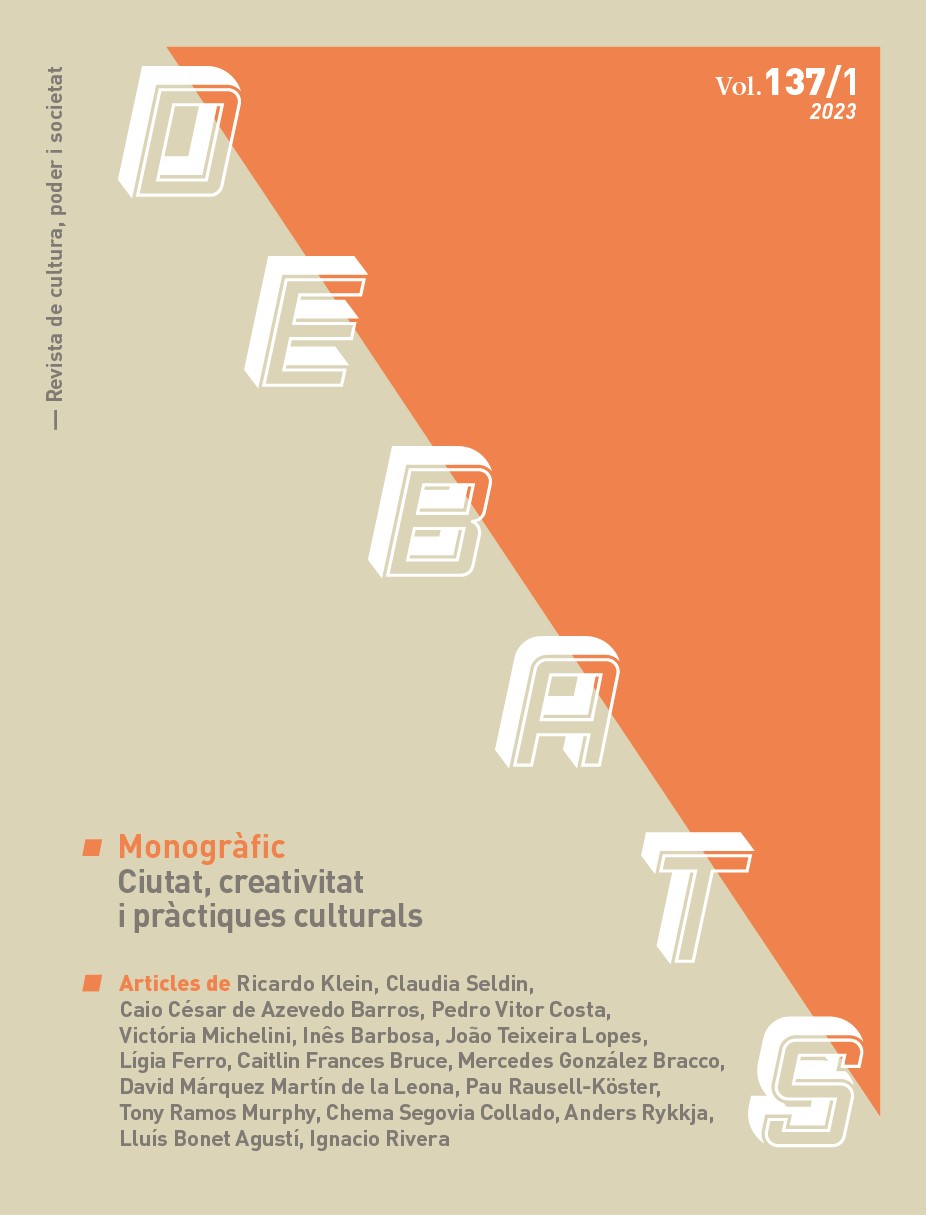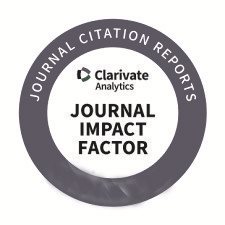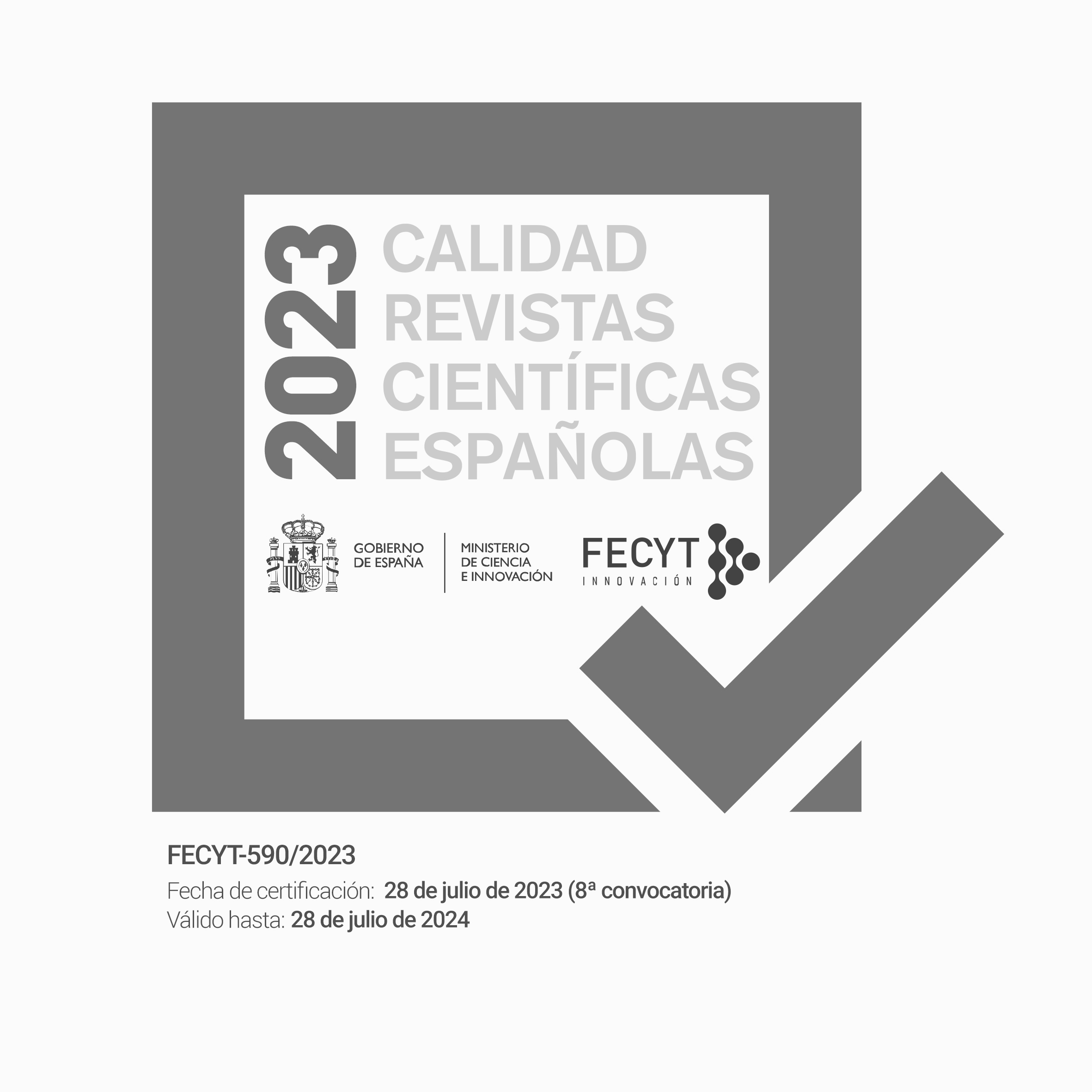Movilidad, efimeridad y economías turísticas: tour grafitero practicando running en León, Guanajuato
DOI:
https://doi.org/10.28939/iam.debats-137-1.3Palabras clave:
tourism, urban art, Mexico, urban imaginaries, mobility, ephemeralityResumen
En este artículo analizo la creación de un tour para runners que muestra el arte del grafiti por encargo (o arte urbano) en León, Guanajuato, México. Fundados en 2017, los recorridos son parte de un cambio económico y cultural muy grande que aleja a la ciudad de sus raíces agrícolas e industriales. Desde la década de los 90, León ha buscado el estatus de ciudad global sin dejar de intentar reivindicar conexiones con la tradición. Prácticas creativas como el arte urbano ayudan a cultivar una imagen urbana atractiva. Argumento que los recorridos dramatizan sobre tres temas en el corazón tanto del discurso de las ciudades creativas, como de los desafíos y las fricciones que existen en la institucionalización del grafiti: movilidad, efimeridad y economía.
Descargas
Citas
Austin, J. (2002). Taking the train. New York: Columbia University Press.
Bloch, S. (2020). Going all city. Chicago: University of Chicago Press.
Bruce, C.F. (2016): “Tour 13: From Precarity to Ephemerality,” GeoHumanities, DOI:
1080/2373566X.2016.1234352
Camarena, D. (2001). “Recopicación gráfica de graffiti en León,” unpublished undergraduate
thesis, Universidad Iberoamericana León.
Campbell, B. (2003). Mexican murals in times of crisis. Tucson: University of Arizona Press.
Cockcroft, E., Weber, J. and Cockcroft, J. (1977). Toward a People's Art. New York: Dutton.
Coffey, M. K. (2012). How a revolutionary art became official culture. Durham: Duke
University Press.
Ferrell, J. (1993). Crimes of Style: Urban Graffiti and the Politics of Criminality. Garland.
Galvis, J. P. (2017). Planning for urban life: Equality, order, and exclusion in Bogotá's lively
public spaces. Journal of Latin American Geography, 16(3), 83-105.
García Canclini, N. (2001) Consumers and Citizens: Globalization and Multicultural Conflicts,
trans. George Yúdice. Minneapolis: University of Minnesota Press.
Gómez Vargas, H. (2020). Personal communication with author.
Hernández Sánchez, P.(2008), La Historia de Graffiti en Mexico 2.0. Mexico: IMJUV
Hernández, L. (2018). Personal Interview, December 13.
Jasso, R. (2013). “León Pinta Su Pared,” Revista Cultura Alternativa, Publication of the Instituto
Cultural de León, no 33, p.9.
Keim. (2016). Personal Interview.
Latorre, G. (2019). Democracy on the Wall: Street Art of the Post-dictatorship Era in Chile. The
Columbus: Ohio State University Press.
Macdowell L. (2019). Instafame: Graffiti and Street Art in the Instagram Era, United Kingdom,
New York: Intellect Books.
McAuliffe, C. (2012). Graffiti or street art? Negotiating the moral geographies of the creative
city. Journal of urban affairs, 34(2), 189-206.
McRobbie, A. (2018). Be creative: Making a living in the new culture industries. London: John
Wiley & Sons.
Merriman, P., Jones, R., Cresswell, T., Divall, C., Mom, G., Sheller, M., & Urry, J. (2013).
Mobility: Geographies, histories, sociologies. Transfers, 3(1), 147-165.
Mould, O. (2018). Against creativity. New York: Verso Books.
Nickis, Interview, May 11, 2015, León Guanajuato.
Orion, Personal Interview, May 13, 2015, León Guanajuato.
Ortiz van Meerbeke, G., & Sletto, B. (2019). ‘Graffiti takes its own space’ Negotiated consent
and the positionings of street artists and graffiti writers in Bogotá, Colombia. City, 23(3), 366-387.
Pabón-Colón, J. N. (2018). Graffiti Grrlz: Performing Feminism in the Hip Hop Diaspora. New
York: NYU Press.
Rangel, P. Personal Interview, September 17, 2019, Mexico City, Mexico.
Rodríguez, C. (2017). “Plasman artistas su ingenio en panteón,” El Sol de Leon, October 31,
<https://www.elsoldeleon.com.mx/local/pintan-a-la-muerte>. Access date: March 2019.
Salazar, N. B. (2018). Theorizing mobility through concepts and figures. Tempo Social, 30(2),
-168.
Spok, Personal Interview, May 11, 2015, León Guanajuato..
Swanson, K. (2013). Zero tolerance in Latin America: Punitive paradox in urban policy
mobilities. Urban Geography, 34(7), 972-988.
Téllez Valencia, C. (2014). La construcción de la tecnocracia en León y su proyecto inacabado
de participación social. Relaciones. Estudios de historia y sociedad, 35(138), 209-243.
Wilson, D. (2017). Making Creative Cities in the Global West: The New Polarization and
Ghettoization in Cleveland, USA, and Glasgow, UK. In Inequalities in Creative
Cities (pp. 107-127). New York: Palgrave Macmillan.
Young, A. (2010). Negotiated consent or zero tolerance? Responding to graffiti and street art in
Melbourne. City, 14(1-2), 99-114.
Wes, Personal interview, May 13, 2015, León Guanajuato.
Descargas
Publicado
Cómo citar
Número
Sección
Licencia
Sin perjuicio de lo dispuesto en el artículo 52 de la Ley 22/1987 de 11 de noviembre de Propiedad Intelectual, BOE del 17 de noviembre de 1987, y conforme al mismo, los autores o autoras ceden a título gratuito sus derechos de edición, publicación, distribución y venta sobre el artículo, para que sea publicado en Debats. Revista de cultura, poder y sociedad.
Debats. Revista de cultura, poder y sociedad se publica bajo el sistema de licencias Creative Commons según la modalidad «Reconocimiento - NoComercial (by-nc): Se permite la generación de obras derivadas siempre que no se haga un uso comercial. Tampoco se puede utilizar la obra original con finalidades comerciales».
Así, cuando el autor o autora envía su colaboración, acepta explícitamente esta cesión de derechos de edición y de publicación. Igualmente autoriza a Debats. Revista de cultura, poder y sociedad, la inclusión de su trabajo en un fascículo de la revista para que se pueda distribuir y vender.











